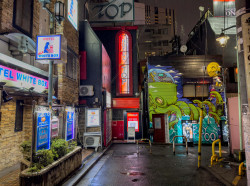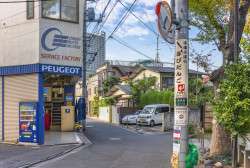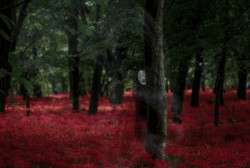
Originally published on metropolis.co.jp on November 2011



In a samurai residence in Aizuwakamatsu city, the lady of the house bowed deeply to welcome me. Next door, a young maid served the Lord tea. Around the corner, the five-story clan castle—the most formidable in northern Japan—stood silent guard. These—the castle and characters—are just convincing reproductions of a bygone era, but the incredible story and sights of Aizu are real.
The mountain-encircled province of Aizu is in the west of Fukushima prefecture, lodged above Nakadori, the central strip traversed by the bullet train, and further still from Hamadori, the coastal strip where the notorious nuclear plant simmers. In the days after the March disaster, mountain ranges in the east blocked the westward drift of radiation. Now, the Aizu region—bigger than Chiba prefecture—is a relative oasis of oxygen, with background radiation levels similar to Tokyo.
I picked up an encyclopedia’s worth of English maps and pamphlets at the tourist information office at Aizuwakamatsu station. A small sightseeing bus called the Haikara stops at all the major city sights, with an all-day ticket costing ¥500. My first stop was Nanokamachi, a colorful blend of brick, earth and wooden buildings housing some of Aizu’s most treasured exports: sake, lacquerware and decorative candles.
Open for visitors is the century-old upstairs surgery of Nobel Prize winning bacteriologist Hideyo Noguchi. Black and white photos and letters on display show the early life of Aizu’s most famous son and national hero. You should recognize him: his face is enshrined on the ¥1,000 note.
The Haikara bus goes onto the castle and samurai residences for a peek into the old world of Aizu, when it dominated north Japan, before its crushing defeat in the 1868-69 Boshin civil war.
The ritual suicide of 19 teenage samurai of Aizu’s Byakkotai (White Tiger Brigade) is commemorated at Iimori Hill (pictured; second), the last stop on the tour bus. Returning from battle in the civil war, 20 of the teenagers, cut off from the rest of their unit, saw smoke rising from near their castle and retreated to the hill. Assuming their lords and family dead, they committed seppuku—all but one perishing. The smell of incense lingers around their graves, found between the oddly helix-shaped Sazaedo (turban shell temple) and an eagle statue which was dedicated by an admiring Benito Mussolini.
Bullet trains or crammed commuter carriages at rush hour are not the only unforgettable rides in Japan. The Aizu Tetsudo line, a trundle train through the sticks, makes for a startling contrast to ultra-modern Tokyo transport. The single carriage I boarded had no automatic doors and the ticket gate was on the inside. As was a blue uniformed conductor, whose main duties seemed to consist of pursuing pesky moths and repeatedly warning passengers there was no toilet on board.
My destination was Ouchi (pictured; top), 45 minutes south along the central Aizu basin. It’s a former staging post on the old mountain path to Edo. I alighted at the thatched roof station of Yunokami Onsen (pictured), and changed there for a short bus ride.


A dirt walkway runs between thatched roof stores serving soy-soaked inago (locusts), grilled iwana (char) and chewy lumps of tokoroten (seaweed jelly). On a tatami mat inside one of them, I sat and ate Ouchi’s curious traditional lunch: soba noodles with leek. In Ouchi fashion the noodles are not eaten with chopsticks, instead the stick of leek is your edible cutlery.
Leaving Aizu, I took the slow scenic train east to Koriyama, breaking the journey halfway at Inawashiro station. From outside the station, I rented a mamachari bike for a ride through the rice fields to Lake Inawashiro, the fourth largest in Japan (pictured; bottom). The eminent doctor Noguchi grew up here eating shrimp from these waters. They now provide a winter home for migrating swans, and a sparkling view for skiers looking down from the slopes above.
The Noguchi Hideyo Memorial Hall preserves the thatched dwelling where he grew up on Aizu’s volcanic frontier. Over 1,000 meters above, the Fuji-like peak of Mount Bandai dominates the skyline. In the late 19th century, a young Noguchi witnessed Bandai erupt, an earth-shattering explosion that devastated the district and changed the topography of the region forever—another extraordinary event in the history of the region.
Sadly, right now, the stunning sights and stories of Aizu are becoming a forgotten part of Fukushima—and a forgotten part of Japan.







